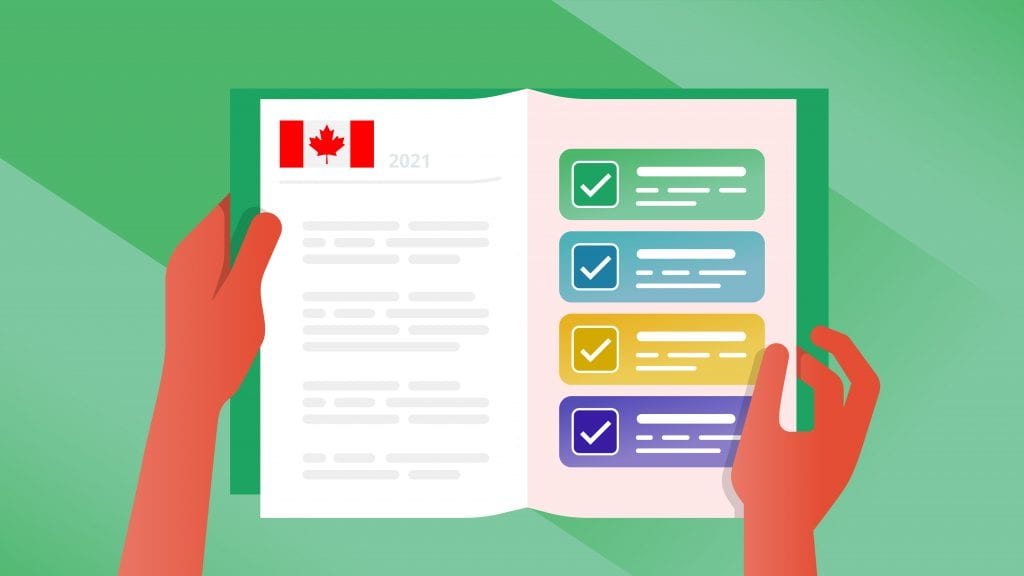The AODA Compliance Guide
New enhancements will be required in January 2021 for AODA compliance. Learn how to make your website and content compliant & accessible.

Setting the pace for Canadian accessibility, Ontario’s provincial government passed the Accessibility for Ontarians Disability Act (AODA) in 2005. Marking milestones along the way, the AODA has achieved great progress for Ontarians with disabilities. Another important milestone arrives on January 1, 2021, focusing on website accessibility and, frankly, couldn’t come at a better time.
With the coronavirus pandemic forcing people around the world to find new ways to work, learn, and play, accessibility to websites and web content has never been more important. Here, we outline the January 2021 enhancements required for AODA compliance.
The AODA Mission
Applying to both private and public sectors in Ontario, the 2005 Accessibility for Ontarians Disability Act (AODA) was passed to improve upon the 2001 Ontarians with Disabilities Act. Ontario reports that about 15.5% of its population or 1.85 million people live with disabilities. As disabilities increase when people age, the province projects its senior population will reach 23.4% by 2036. Providing a path to full accessibility by 2025, the AODA mission is improving the way Ontarian organizations do business with this rising population.
The AODA legislates compliance standards for five business sectors:
- Public Space Design
- Transportation
- Employment
- Customer Service
- Information and Communications
AODA Compliance Guide for 2021
Within the Information and Communications Standard for AODA compliance, new requirements for Ontario websites and web content take effect on January 1, 2021. If there are 50 or more employees, private and public sector entities, non-profits included, must make their websites and web content conform to Level AA of the Web Content Accessibility Guidelines (WCAG) 2.0. Pre-2012 content and internal intranets are exempt.
WCAG 2.0 Conformance
WCAG 2.0 is an international standard focusing on integrated accessibility design for web developers. The January 2021 AODA milestone requires conformance to WCAG 2.0 Level AA. Level A conformance is a precondition for Level AA conformance. The following guide briefly outlines WCAG 2.0 Level A and AA conformance requirements:
WCAG 2.0 Conformance Requirements
(Level AA requirements are presented inline with the relevant Level A requirements)
1.1: Provide text alternatives for non-text content, with few exceptions.
1.2: Provide text or media alternatives for prerecorded time-based audio and video content; audio and video transcriptions, video captioning for prerecorded media. Level AA: Audio descriptions for prerecorded media; captioning for live media.
1.3: Create adaptable content that displays in various ways without structure or information loss, such as displaying a simpler format while maintaining the organized flow of webpage components.
1.4: Don’t indicate user actions solely by color; provide audio playback and volume controls for automatic audio; text and images of text must meet contrast ratio requirements. Level AA: Text must be resizeable to 200% without assistive technology; text images are limited to a few exceptions.
2.1: Ensure all webpage functionality is available from a keyboard.
2.2: Provide users enough time to read and use content via audio and video playback controls; adjustable timing; adjustable speed.
2.3: Eliminate or reduce flashing visual content.
2.4: Simplify user navigation and page orientation by skipping repeated blocks of content; using descriptive page titles; preserving navigation order. Level AA: Use multiple navigation methods; headings; subheadings; self-explanatory link text; visible keyboard focus indicator.
3.1: Ensure content language can be determined programmatically. Level AA: Programmatically determine each passage or phrase except for proper names and certain terms.
3.2: Ensure no change of context when an interface component receives focus or component setting changes. Level AA:Design webpage navigation uniformly; consistently identify components for predictable appearance and operation.
3.3: Identify automatically detected user input errors, describing them in text format; provide input instructions and labels. Level AA: Input for legal commitments or financial transactions must be verified and/or confirmed and/or reversible.
4.1: Design for current and future user technology compatibility, including assistive technology (AT) and augmented reality(AR) by validating markup language and ensuring the full functionality of user interface components can be programmatically determined.
Reap the Benefits of Website Accessibility
When you widen your online audience by adding audio to text captioning, transcription, and subtitling, your viewers benefit and your business is likely to benefit, too. Besides helping people with disabilities to understand your web content more easily, here are some additional benefits:
- Media can be enjoyed in low-noise environments, e.g. libraries, hospitals
- Audio can be searched for keywords
- Increased internet search engine visibility
- Content can be enjoyed by speakers of other languages
- Text can be repurposed for social media posts
- Accessible content encourages social media sharing
Improving website accessibility can improve your bottom line, too. Forbes Magazine reports a potential 400% increase in conversion rates on websites with optimized accessibility.
The province of Ontario, Canada is setting a great example by requiring accessibility compliance. Even for enterprises exempt from AODA rules, the 2021 requirements can increase the digital accessibility of your websites and web content. If you’d like help reaching a much wider audience, check out our audio to text services today!
Subscribe to The Rev Blog
Sign up to get Rev content delivered straight to your inbox.



